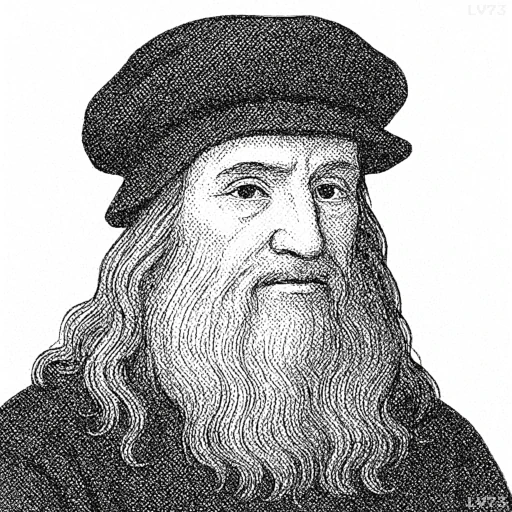“The function of muscle is to pull and not to push, except in the case of the genitals and the tongue.”

- April 15, 1452 – May 2, 1519
- Italian
- A versatile man (painter, sculptor, architect, inventor, scientist, etc.)
table of contents
Quote
“The function of muscle is to pull and not to push, except in the case of the genitals and the tongue.”
Explanation
This quote by Leonardo da Vinci reflects his deep understanding of human anatomy, which was ahead of his time. Leonardo meticulously studied the human body through dissection and observation, and his findings were revolutionary. At the core of this quote, da Vinci explains the fundamental principle of muscle function: muscles primarily contract to pull, not to push.
Muscles work in pairs. When one muscle contracts, the opposing muscle relaxes, creating movement. This principle applies to most muscles in the human body, whether it’s in the arms, legs, or torso. However, muscles cannot push—they only pull to create force. The exceptions he mentions—the genitals and the tongue—are interesting. The genitals use a unique set of muscles to allow for both pushing and pulling actions, particularly in processes like ejaculation. The tongue also demonstrates versatility by pulling and pushing in various movements related to speech and swallowing.
In the modern world, da Vinci’s observation plays a critical role in fields like medicine and sports science. Understanding how muscles function and how they interact is essential in designing more effective physical rehabilitation programs, as well as in sports training to enhance performance and avoid injury. For instance, in physiotherapy, therapists focus on strengthening muscles that are weak or imbalanced, ensuring proper muscle function for activities like walking or running.
Leonardo’s insights into the human body, drawn from his deep curiosity and anatomical studies, continue to influence modern medicine and biomechanics, demonstrating how knowledge of the body can lead to better health practices even centuries later.
Would you like to share your impressions or related stories about this quote in the comments section?

